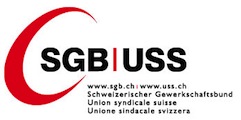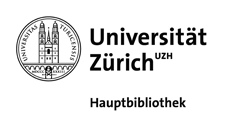Publications des institutions partenaires
Decomposing the economic costs and benefits of accession to the EU: the Swiss case
Institution partenaire
English / 01/01/2001
Investigating the shape of the EKC: a nonparametric approach
FEEM Note di Lavoro Series CLIM
Institution partenaire
English / 01/01/2001
U.S. - EU Relations : Drifting Apart? Disssociative and Associative Approaches
This chapter exposes exaggerations and sometimes even the objectives errors which have appeared in the 'dissociative approach' : those researchers who have wrongly predicted a dislocation of the transatlantic link after the end of the Cold War. This study mainly analyses the reasoning which led to affirm that NATO was condemned to disappeart, that the Uruguay Round…
Institution partenaire
English / 01/01/2001
Formula 1 racing and arbitration : the FIA tailor-made system for fast-track dispute resolution
Institution partenaire
English / 01/01/2001
Content and Interface Models for Multi Point of View Scientific Hyperbooks
We present a model for creating, managing, and viewing the contents of scientific hyperbooks. The model we propose is based on reusable information fragments and on terminological fragments that contain concept definitions. The definition of concepts, which plays an essential role in scientific writings, are represented in a formal language. These formal definitions can then be…
Institution partenaire
English / 01/01/2001
Learning by Creating Multipoint of View Scientific Hyperbooks
Learning by collaboratively writing scientific hyperbooks requires specific software tools. We present a model for creating, managing, and viewing the contents of the hyperbook. The model we propose includes the representation of information fragments and their relationships; a specific representation of concepts (terminological fragments) and a language for the creation of hypertext…
Institution partenaire
English / 01/01/2001
Design and Analysis of Virtual Museums
Using the same data, which could come from local databases or external sources such as the Web, virtual museum designers can build different hyperspaces. It is possible that visitors would find some of them more useful than others. Therefore, virtual museums designers should be equipped with a tool by which various hyperspaces for virtual museums can be easily designed and examined.…
Institution partenaire
English / 01/01/2001
A Formal Development and Validation Methodology Applied to Agent-Based Systems
This paper presents first a formal development methodology that enables a specifier to add complexity progressively into the system design, and to formally validate each step wrt client's requirements. Second, the paper describes the application of this methodology to agent-based systems, as well as development guidelines that help the specifier during the development of such…
Institution partenaire
English / 01/01/2001
Theme IV: Business Related Issues Trading of Intangible Goods
During the last few years, the amount of information and services available and used in electronic form has increased almost exponentially. These types of digital information and services constitute a new general class of goods, which we call Intangible Goods. Intangible goods having distinct characteristics from their counterpart tangible ones, that require specialized approaches…
Institution partenaire
English / 01/01/2001
Healthcare PANs: Personal Area Networks for trauma care and home care
The first hour following the trauma is of crucial importance in trauma care. The sooner treatment begins, the better the ultimate outcome for the patient. Generally the initial treatment is handled by paramedical personnel arriving at the site of the accident with an ambulance. There is evidence to show that if the expertise of the on-site paramedic team can be supported by immediate…
Institution partenaire
English / 01/01/2001
Multiculturalism, differentiated citizenship and the problem of self determination
Institution partenaire
English / 01/01/2001
Concluding remarks: Conceptual distinctions for the study of political altruism
Institution partenaire
English / 01/01/2001
Social Networks and Individual Perceptions: Explaining Differential Participation in Social Movements
This paper seeks to explain differential participation in social movements. It does so by attempting to bridge structural-level and individual-level explanations. We test a number of hypotheses drawn from the social networks and the rationalist perspectives on individual engagement by means of survey data on members of a major organization of the Swiss solidarity movement. Both…
Institution partenaire
English / 01/01/2001
Different issues, same process: Solidarity and ecology movements in Switzerland
Institution partenaire
English / 01/01/2001
Robust Lorenz Curves: A Semi-Parametric Approach
Lorenz curves and second-order dominance criteria are known to be sensitive to data contamination in the right tail of the distribution. We propose two ways of dealing with the problem: (1) Estimate Lorenz curves using parametric models for income distributions, and (2) Combine empirical estimation with a parametric (robust) estimation of the upper tail of the distribution using the…
Institution partenaire
English / 01/01/2001
Resistant Selection of the Smoothing Parameter for Smoothing Splines
Robust automatic selection techniques for the smoothing parameter of a smoothing spline are introduced. They are based on a robust predictive error criterion and can be viewed as robust versions of C p and cross-validation. They lead to smoothing splines which are stable and reliable in terms of mean squared error over a large spectrum of model distributions.
Institution partenaire
English / 01/01/2001
Robust Inference for Generalized Linear Models
By starting from a natural class of robust estimators for generalized linear models based on the notion of quasi-likelihood, we define robust deviances that can be used for stepwise model selection as in the classical framework. We derive the asymptotic distribution of tests based on robust deviances, and we investigate the stability of their asymptotic level under contamination. The…
Institution partenaire
English / 01/01/2001
Putting Robust Statistical Methods into Practice: Poverty Analysis in Tunisia
Poverty analysis often results in the computation of poverty indexes based on so-called poverty lines which can be region speci…c poverty lines. The poverty lines are made of two components, namely the amount of income to satisfy the food and the non food needs. For both components, one needs to estimate quantities such as local prices or the consummers' average basket, and this…
Institution partenaire
English / 01/01/2001
Distributional Dominance with Dirty Data
Distributional dominance criteria are commonly applied to draw welfare inferences about comparisons, but conclusions drawn from empirical implementations of dominance criteria may be inßuenced by data contamination. We examine a non-parametric approach to reÞning Lorenz-type comparisons and apply the technique to two important examples from the LIS data-base.
Institution partenaire
English / 01/01/2001
Seiten
Le portail de l'information économique suisse
© 2016 Infonet Economy












